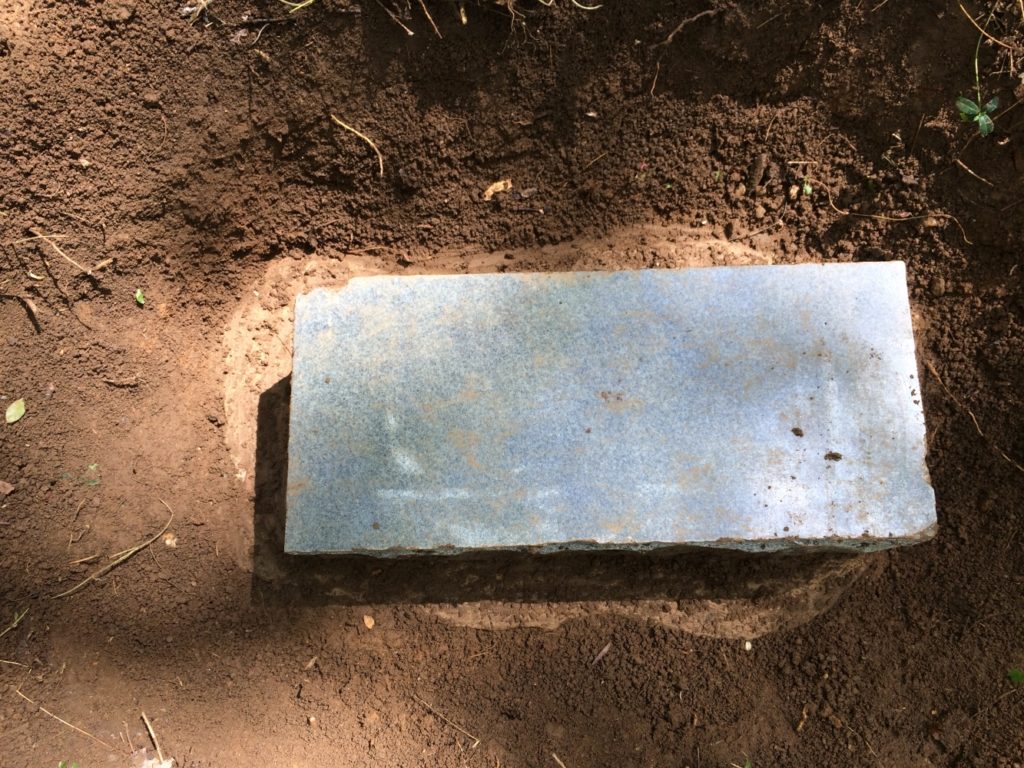By Joe Byrne
Flush with the success of my previous headstone restoration, I went ahead with round 2. I found a headstone in the same line as the others I had restored.
It was the headstone of Emma Carter:

First a quick note on how/why I choose a particular headstone for fixing. My first criteria is the legibility of the inscription. For many of the headstones–particularly those carved of soapstone, limestone, and marble–the inscription has long since been worn away by the elements. That is rarely the case with stones, like this one, made of granite. So granite stones are more likely to get my attention, in regards to restoration, than non-granite stones. In my mind, it doesn’t make sense to spend a couple hours and quite of bit of muscular energy to restore a stone that is blank!
In my previous installment, I showed how I accidentally found a buried headstone that, once unearthed, was remarkably intact (Joseph Digg’s headstone). Well, sometimes you find something underground which is an unpleasant surprise (and I don’t mean skeletons!). Such was the case with Emma Carter’s headstone.

In order to fix the headstone, I had to fix the pediment (the bottom block on which the headstone sits). I did a little digging and tried to use a crow bar. It wouldn’t budge. I dug some more, and then more. That’s when I discovered that underneath the pediment (which was about 2 and half feet tall) was a skirt of cement that went down into the ground another two feet.
Not all pediments have such a skirt. Having one makes it much harder to fix. I’m guessing that a hole was dug, cement was poured into it, and the pediment lowered into the pool of wet cement. If so, they lowered it crooked, so that the headstone had to be placed upon the pediment at an angle (and the ground shifted perhaps). Eventually and inevitably the headstone fell off.
I don’t know if the cement skirt was originally part of the grave. I haven’t dug up enough headstones to know if that’s common or rare. It might have been part of a previous restoration effort. If so, as in some cases, in the name of stability and longevity, the “restoration” made things worse. That is why I am loathe to use cement when I fix headstones. If I set them up straight, and they’re heavy enough, that should be enough. And if they get knocked down, I can pretty easily put them back up. Not so with stone with a crooked pediment set in cement.
That’s why I gave up on Emma Carter’s stone for the moment. I will have to come back and do a lot more digging. In the meantime, I set Emma Carter’s stone upright, nearby.



